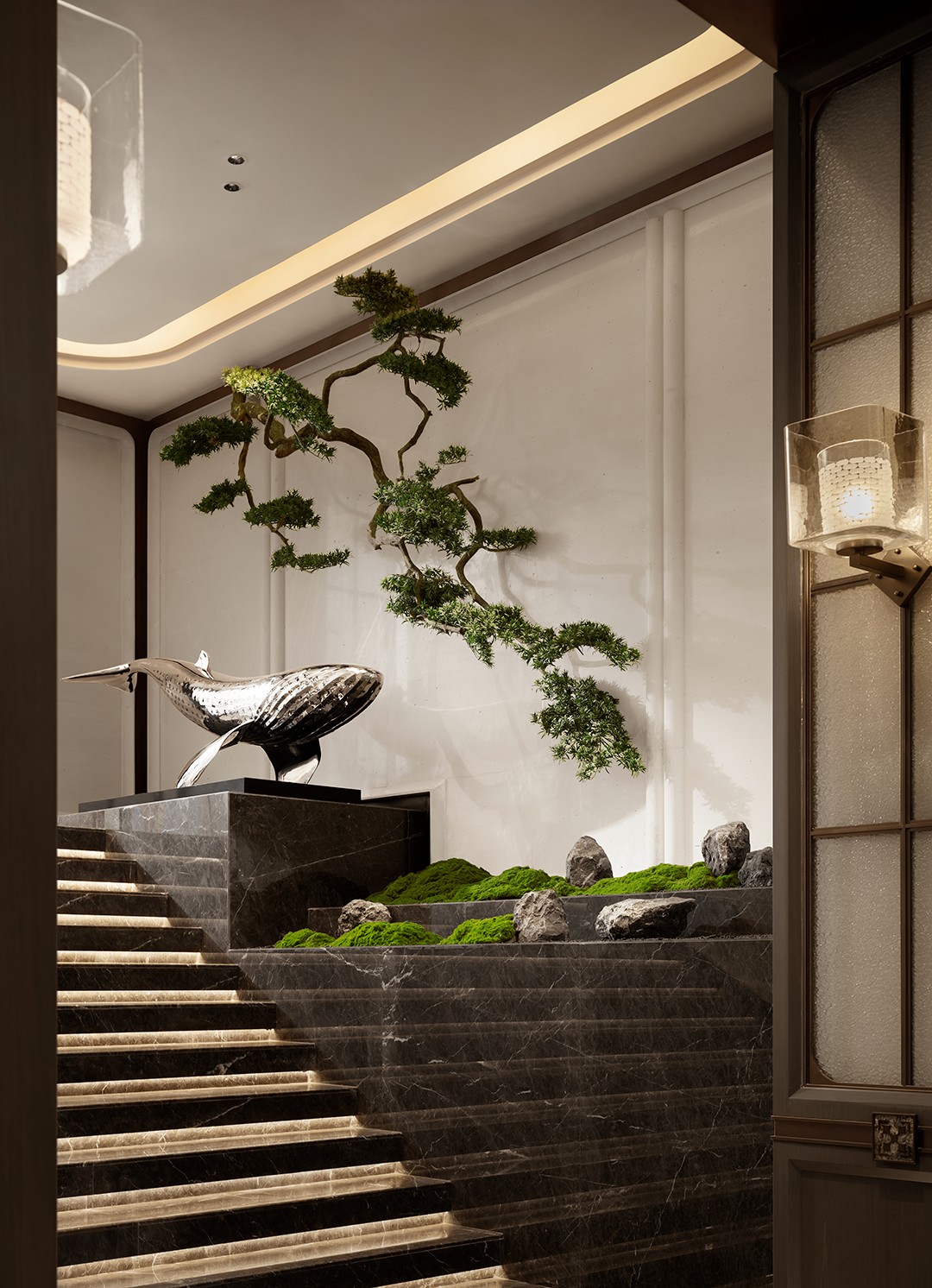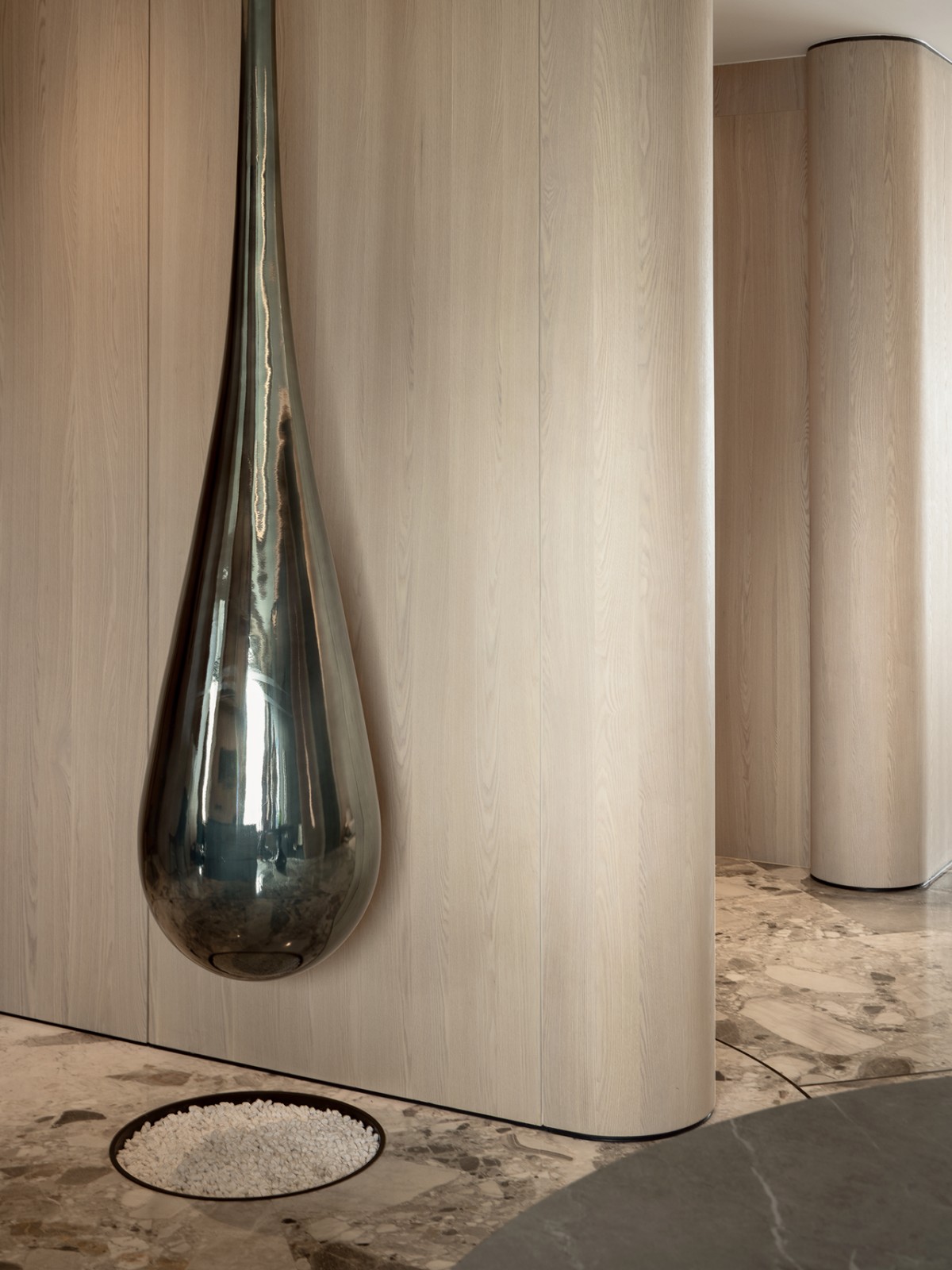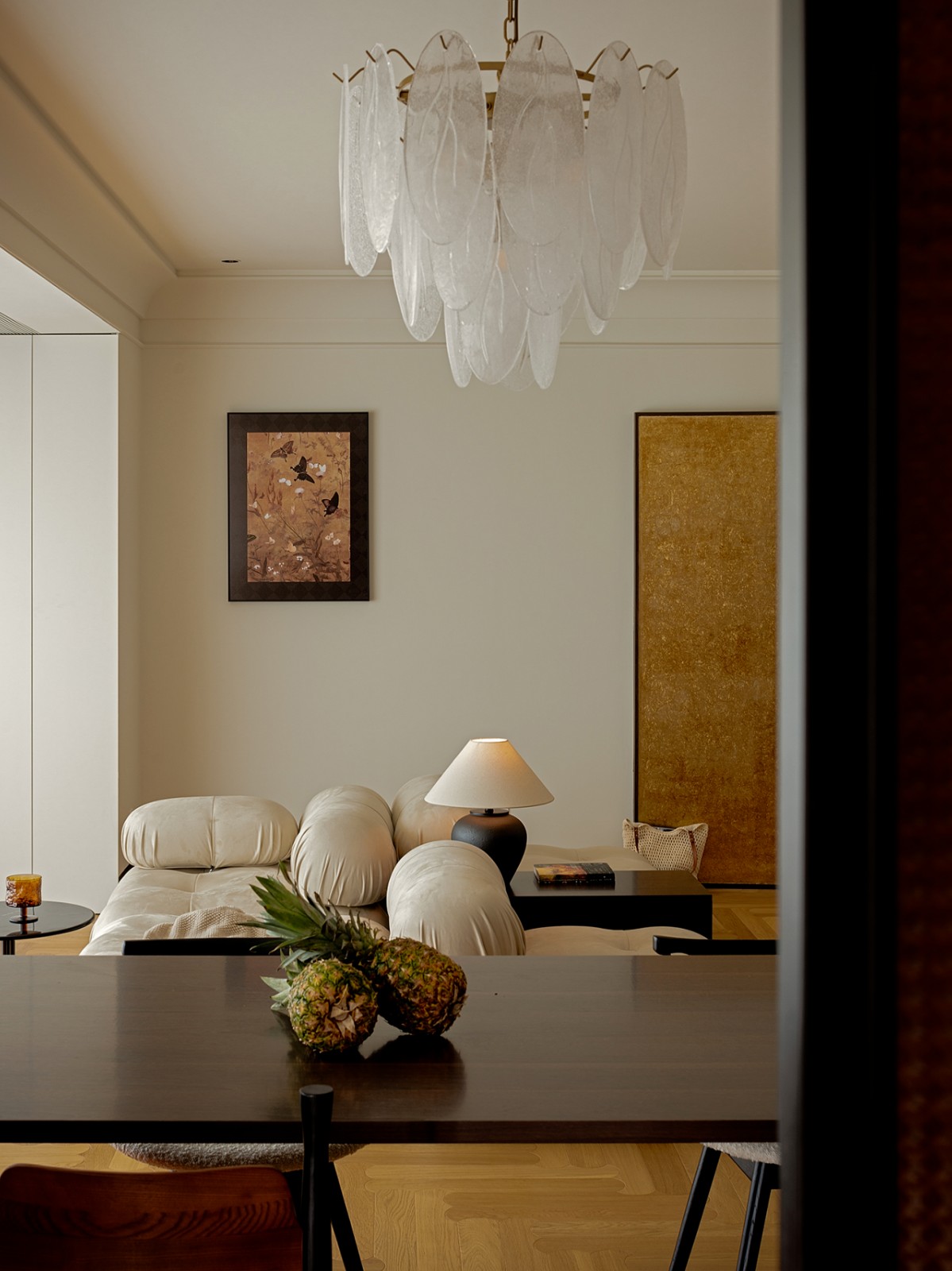Factory Life Julie DAubioul
2013-04-29 01:00
建筑围护结构≠绝缘外壳:这两个外壳之间的间隔是“覆盖室外”空间。
The building envelope ≠ the insulation envelope : the interspace between these two shells is ‘covered outdoor’ space.
The interspace allows/obliges inhabitants to use the space differently each season.
在夏天和春天,中间的空间被用作生活空间(被雨覆盖),冬天只有需要加热的“茧”。
In summer and spring the interspace is occupied as living space (covered from rain) and in winter there’s only the ‘cocoon’ that needs to be heated.
有盖的室外空间也允许及时灵活使用,这是一种可持续生活/建筑的方式。
The covered outdoor space also allows a flexible use in time which is a way of sustainable living / building.
单位可以添加,删除或重新定位,以创造一个不同的星座和空间的使用。
Units can be added, removed or repositioned to create a different constellation and use of space.
覆盖的室外空间允许使用材料和建筑细节,在所有天气条件下都不可能在室外使用。
The covered outdoor space allows the use of materials and building details in a way that wouldn’t be possible outdoors in all weather conditions.
在“正常”建筑中,立面和屋顶必须保护室内空间不受降水的影响,同时对室外和室内进行隔离。这意味着要用某种方式来详细描述建筑。
In a ‘normal’ building the façade and roof must protect inside space from precipitation and at the same time insulate outdoor versus indoor. This implies a certain way of detailing the construction.
在这个覆盖的空间中工作,情况并非如此,这使得建筑细节变得非常有趣和非常规。
In the case of working in this covered space this is not the case, which makes construction details very interesting and unconventional.
我们(男朋友和我)把800平方米的工厂分成两部分:
We (my boyfriend and I) divided the factory of 800 m2 in two parts:
- one side is where we construct our house.
- the other side is workshop.
就是在车间里,我们把起居单元作为临时的居住空间,同时我们正在建造我们的最后一栋房子。这样做的目的是建立一个适宜居住的空间,但同时不需要确定多少,缩小我们今后使用该车间的可能性。
It is inside the workshop that we made the living units as a temporary living space meanwhile we are building our final house. The idea was to make a livable space but meanwhile not having to determinate to much and narrowing our possibilities for any future use of the workshop.
移动单元中的光线来自顶部的聚碳酸酯板块。墙壁上没有窗户,所以当你关上单位的门时,你看起来像是在茧里。可能不在工厂…(这是一种心理上的优势,因为当你整天在终点站工作时,你想要放松,而不必一直看…)。
The light in the mobile units comes through the polycarbonate plates on the top. There are no windows in the walls so that when you close the door of the unit you appear to be in a cocoon. Possibly not inside the factory… (This was a psychological advantage because when you worked all day on het final house you want to relax without having to see it all the time…)
On the contrary office that I made in the workshop is definite and very open.
将来,当我的建筑办公室扩大时,我可能会在车间里对它做一些补充。
Possibly I will make some additions to it in the future inside the workshop when my architecture office expands.
INHABITANTS CREATE OPPORTUNITIES
My boyfriend and I are the inhabitants.
他对车间的具体要求(在摩托车、汽车等方面的工作)。(作为第二项活动)和我对建筑、办公空间的要求在我们寻找房地时起了决定性的作用。
His specific demand for a workshop (to work on motorbikes, cars, etc. as a secondary activity) and my request for an architecture office space have been determinative in our search for a premises.
We are both very interested in (old) industrial architecture.
我们选择自己建造最后的房子(长期和分阶段的项目)导致我们需要一个临时的房子。
Our choice of constructing our final house ourselves (long term and phased project) resulted in the fact that we needed a temporary house.
2011年底,我的办公室是我们在大楼里增加的第一件事。2012年5月,我们搬到临时住所。
At the end of 2011, my office was the first thing that we added to the building. In May 2012 we moved to the temporary house.
当我们买下这座建筑时,屋顶和外墙(有些还在)处于非常糟糕的状态。墙壁上有许多“不断上升的湿度”,有些几乎要散架了。
The roofs and exterior walls were (some still are) in really bad shape when we bought the building. The walls have a lot of ‘rising humidity’ and some were almost falling apart.
这就是为什么我们选择建造独立的、松散的、独立于外墙和屋顶的生活单元的原因。这样,外墙就变成了“花园墙”,新增加的空间可以像新的现代空间那样舒适和方便。
That is a reason why we chose to make living units that stand alone, loose / independently from the exterior walls and roof. This way the exterior walls become ‘garden walls’ and the newly added spaces can have the comfort/convenience of a new modern space.
This allows us to phase the execution of the whole project.
2010年,我们能够以地块的价值买下这座大楼和这块地。
In 2010 we were able to buy the building and the lot at the value of the patch.
在卖方/前任业主看来,这座建筑没有任何价值。他甚至不想给我们看里面的东西,因为他认为这是不相关的。无论如何,它必须被拆除!
In the eyes of the seller/ previous owner the building did not have any value. He even didn’t want to show us the inside because he thought it wasn’t relevant. It had to be demolished anyway!
我的男朋友,我立刻爱上了铸铁柱子和棚屋的屋顶和他们的北方屋顶灯。这座建筑建于1880年,是一座最古老的建筑,是一家纺织厂的一部分,该工厂雇用了大约2000人。现在这个工厂的许多漂亮的其他建筑物都被拆除了。
My boyfriend an I immediately fell in love with the cast iron columns and the shed roofs with their northern rooflights. The building dates from 1880 and was the oldest building that made part of a textile factory that employed about 2000 people. Nowadays a lot of beautiful other buildings of the factory are demolished.
在我们第一次访问这个空间的时候,我们已经清楚地知道,我们将与现有的空间和特点一起工作。
It was already clear to us, the first time we visited the space, that we would work with the existing space and characteristics.
这座建筑丰富的历史见证是我们在柱子、桁架和横梁上看到的许多名字和日期的铭文。
Witness of the rich history of the building are the many inscriptions of names and dates that we encountered on the columns, trusses and beams.
这也是我们不想给整个室内喷砂的原因之一,并给它一层新的油漆。
That is one of the reasons we didn’t want to sand-blast the whole interior and give it a new layer of paint.
我认为这座建筑应该适合居住,适应现代的舒适标准,但也显示出它的真实年龄和帕蒂纳。
I think the building should be livable and adapted to modern comfort standards but also show it’s true age and patina.
The contrast between the new additions and old patina is very interesting.
为了建造我的办公空间,我用了克尔图梁。这是一种与胶合板有关的斯堪的纳维亚产品,用作木梁的替代物,例如木地板。
To construct my office space I used KERTO-beams. This is a Scandinavian product, related to plywood, that is used as an alternative for wooden beams for example in a wooden floor.
我以一种非常非常规的方式使用它们作为倒U形框架的序列。中间是波兰商品的书架、胶合板和绝缘玻璃。
I used them in a rather unconventional way as a sequence of inverted U-shaped frames. In between them are bookshelves of Polish deal plywood and insulating glass panes.
看到克托家族的头像,他们看起来真的很瘦。从侧面看,它们有一定的质量。从不同的角度看,我喜欢不同的感觉。
Seeing the KERTO’s on the head they seem really thin. Seeing them on the side, they have a certain mass. I like the different perception from a different angle.
Kerto的建筑细节,再加上“冷贴”(硅质)玻璃,在外部环境下是不可能/持久的。这是这个(遮蔽的)环境的一个非常具体的构造细节的例子。
The construction detail of the KERTO’s in combination with the ‘cold posted’ (siliconed) glass panes would never be possible / durable in an exterior environment. This is an example of a very specific construction detail for this (sheltered) environment.
在办公空间的一侧,我用了“锤击”(带肋)玻璃板。这是指现有屋顶灯的玻璃窗类型,它们允许光线,但在我车间的一部分和我男朋友的部分之间设置了一个视觉屏障。
On one side of the office space I used ‘hammered’ (ribbed) glass panes. This is a reference to the type of glass panes of the existing rooflights. They admit light but make a visual barrier between my part of the workshop and the part of my boyfriend.
该项目的出发点,即旧建筑的再利用,是一种可持续思维的形式。
The starting point of the project, the reuse of an old building, is a form of sustainable thinking.
这幢现有建筑物的每一项增建都可以在将来拆除,使现有的建筑物和结构不受损害。
Every addition to this existing building can be removed in the future, leaving the existing building and structure unharmed.
让某些空间开放和不确定,使我们能够使建筑适应功能的变化和未来的想法。
Leaving certain spaces open and undefined allows us to adapt the building to functional changes and future ideas.
All the wood that we used for the new additions is FSC-labeled.
我喜欢建筑的实际一面对事物的形式和大小产生了影响。我们自己也做了很多建设,这就产生了实际的后果。
I like the fact that the practical side of building had a repercussion on the form and size of things. We also did a lot of construction ourselves, which has practical consequences.
我男朋友和我在两个周末里自己建造了临时的移动生活单元。
My boyfriend and I built the temporary mobile living units ourselves in two weekends.
我设计它们是一个非常基本的,简单的结构(在车轮上!),这是容易和快速的建设。
I designed them as a very basic, simple construction (on wheels!) that was easy and quickly to build.
我选择使用OSB纤维板的标准尺寸来设计这些单元。这样做的好处是,我们不必看到盘子,也没有任何木材废料。
I opted to design these units using the standard measurements of an OSB-fiberboard. The advantage of doing so was that we didn’t have to saw the plates and didn’t have any wood waste.
我们把墙壁平铺在地上,然后竖立起来,用轮子把它们固定在木地板上。就像用扑克牌做房子一样。
We made the walls flat on the ground and then erected them and fastened them to the wooden floor on wheels. It like making a house of playing cards.
机组的总尺寸也取决于车间内铸铁支柱的距离。它非常适合在他们之间,所以我们可以重新部署单位,随时我们想。
The total size of the units is also determined by the distance of the cast iron pillars in the workshop. It fits perfectly in between them so we can relocate the units any time we want.
与任何其他建筑项目一样,我办公室空间的施工细节是与承包商多次协商的结果,也是许多实际考虑的结果。
As in any other architecture project the construction details of my office space are the result of several consultations with the contractor and many practical considerations.
玻璃不可能比办公空间前面的玻璃大多少,因为承包商必须用手把玻璃搬进去。
The glass panes couldn’t be much larger then the ones on the front of the office space because the contractor had to carry them inside by hand.
作为一名建筑师,我试图在我的所有项目中暗示‘大创意’(介于内部和外部之间的中间空间),尽管我并不总是像这里那样拥有平方米(或表面)。
I try to imply the ‘big idea’ (of an intermediate space between inside and outside) in all of my projects as an architect, although I don’t always have the square meters (or surface) to do so in the way that we did here.
我确信,一个中间空间之间的内外可以是一个非常有价值的额外‘传统’的房子,即使在比利时(下雨)的气候!
I’m convinced that an intermediate space between inside and outside can be a very valuable addition to a ‘traditional’ house, even in a Belgian (rainy) climate!
很多佛兰芒人的房子和他们典型的“阳台”都是这样的,尽管我相信有一个比这更有价值的解决方案。
This is already the case with a lot of Flemish houses and their typical ‘verandas’, although I’m convinced that there can be a more valuable solution than this.
For example architects Lacaton & Vassal use this idea of intermediate space between inside and outside to create very relevant architecture that focuses on the use of a house according to the seasons.
 举报
举报
别默默的看了,快登录帮我评论一下吧!:)
注册
登录
更多评论
相关文章
-

描边风设计中,最容易犯的8种问题分析
2018年走过了四分之一,LOGO设计趋势也清晰了LOGO设计
-

描边风设计中,最容易犯的8种问题分析
2018年走过了四分之一,LOGO设计趋势也清晰了LOGO设计
-

描边风设计中,最容易犯的8种问题分析
2018年走过了四分之一,LOGO设计趋势也清晰了LOGO设计










































































































